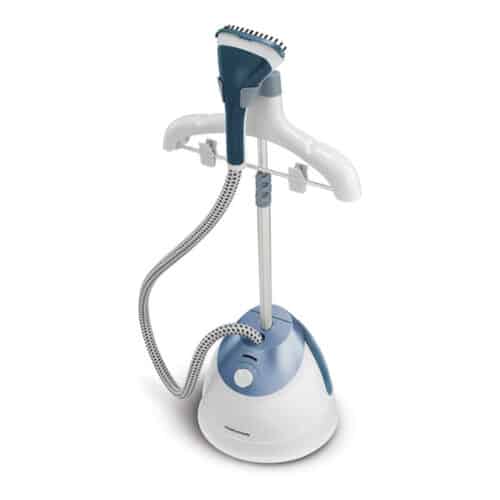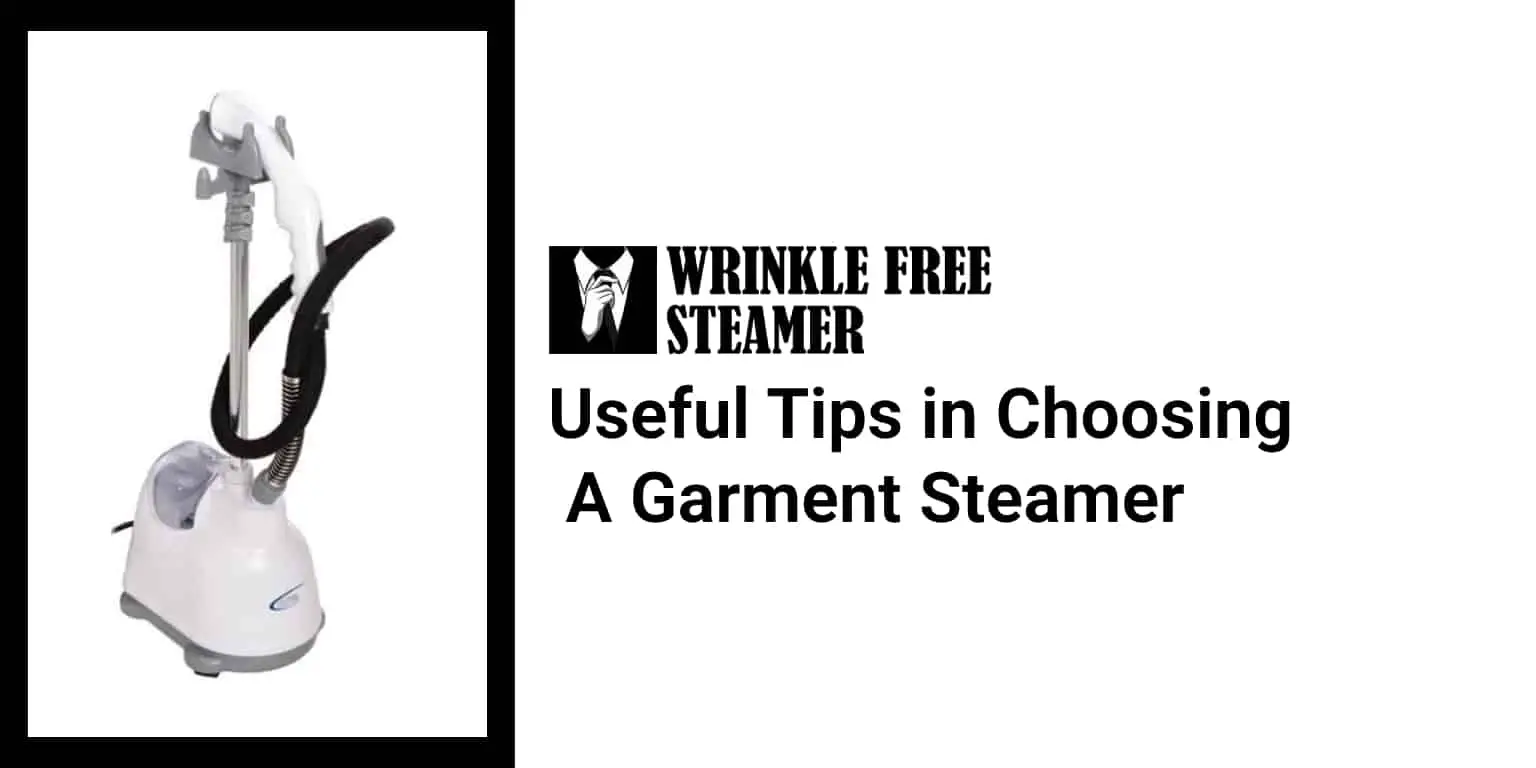As an Amazon Associate we earn from qualifying purchases.
Clothes steamers are a simple and reliable method for extracting wrinkles from clothes, linens, slippers, and drapes. Steamers are easy to use, and only a few tips will make you look like an expert. You could also find opportunities to use it all over the building.

Ironing your clothes is now a relaxing and straightforward job thanks to a clothes steamer that penetrates even the thickest fabrics and prevents even the deepest wrinkles without having to insist too hard on a clothing piece. With all the models available, it’s hard to say which features are relevant and what makes a steamer powerful and functional. Therefore, our buying guides will help you pick the right type of laundry steamers to transform the way you used to iron your clothes.
What to consider before buying a steamer?
Until you buy a clothes steamer, take the time to try out some ideas to help you make the right decision. As experienced cleaners know, steam is a gentle and efficient way to extract wrinkles, odors, and freshen fabrics. Steaming is easier than ironing and would not scorch or ruin any of the materials.
Type: Where do you use the steamer most often—at home or while you’re traveling? It’s easy to pick a home steamer or a travel steamer to suit your unique needs.
Price: Steamers come at a wide variety of prices. Determine the budget; you will need to make trade-offs when contrasting features and costs.
Quality: Study the performance ranking of each model on independent platforms such as Amazon.com. Research how easily each steamer heats, the water’s power well, its amount of steam production, and its durability to keep hot water from spilling and burning.
Features: Review each model’s attachments and parts, such as brushes, folding handles and fire, and steam settings.
Energy Use: Read the fine print of each steamer’s wattage and energy use. Any large residential models need considerable power to operate. Then it would be best if you balanced that against paying dry cleaner bills for pressing.
Performance: The best steamers heat up fast, but a larger pool of water can take longer to rise to temperature. Of course, the larger the tank, the more steam you’ll get in-between refills. Beyond water power, the best steamers will not spit water on you or your clothes but will generate even steam.
Ease of Use: If you are only steaming clothes that can fit comfortably on a hanger, you do not need a long tube or a power cord for your steamer. Larger products, such as drapes, are easier to steam when you have an extended line or connection.
Maintenance: Many people opt for disposable tanks because they are more comfortable to fill and clean. If your steamer’s base is not removable, make sure the product comes with simple cleaning instructions.
Accessories: Certain steamers have special features or come with add-ons that make steaming simpler, such as automatic shut-off, wheels, built-in hangers, steam boards, and more.
How To Choose A Steamer
Choose between a handheld model and a floor model.
Decide whether you want a portable model or a floor one, depending on how and where you want to use it. A portable fabric steamer is a compact device that you can plug in and carry with one hand, while the floor model is larger and has a pole with a hanger to hold the garment. If you choose one for your home, you should opt for all of the models, but if you want a steamer to carry with you while you fly, you can opt for a handheld one.
Test how long the steamer takes to heat up.
When you pick your clothes steamer, check the heat up time to make sure you get one with a quick heat up time. You wouldn’t want to wait 15 minutes for the steamer to heat the water and release some steam, particularly if you’re in a rush and you need something blinked. The sooner the water reaches a high temperature, and the smoke comes out, the more effective the system is.
Analyze the scale of its water tank.
Depending on their form and size, the garment steamers have a water tank that stores a particular water volume that will gradually turn into steam. The tank’s size defines how long you’ll experience the strong steam that penetrates even the thickest fabrics. If the tank is considerably more significant, the system will deliver moisture for a longer time, while the smaller tank’s water will last less.
Choose a problem-free model.
It is one of those retail tips that extend to all items since we all prefer stuff that is as easy to use as possible. The shape and scale of the clothing steamer will decide how simple and convenient it is to use. If you’ve never seen one before, you’ll find a heavy model that’s very awkward to use, and it’ll be hard to handle when steaming your clothing. Light and thinly formed steamer is simpler to use and reduces the challenge of ironing even big clothing. To figure out whether a steamer is easy to use, it would be prudent to read any reviews. To do this, go to the steamer—clothing platform, where you’ll find a lot of positive feedback.
Look for a steamer with accessories.
Accessories that come with a steamer are essential when it comes to purchasing an effective and flexible device. Certain clothes only have a steam head, but others are more versatile with a range of gadgets that allow you to clean the lint off your clothes, create a crease on your wool trousers, or straighten the necklaces and cuffs completely. Also, the clothes hanger is another crucial accessory that makes ironing a lot simpler, so you can hang your clothes and handle the steamer with both hands.
Steamer Use Guidelines
Enable the steamer to heat entirely before operating on some cloth. r This will avoid the sputtering of water that can leave a trace before the vapor emerges. Check the kitchen towel to make sure you have a full steam head.
Steam fabrics often in a vertical, erect position. Hang the clothes from the hook and leave the curtains on the rod. Pressing the clothes back would not serve to loosen the wrinkles. It also helps the condensation in the steam hose to trickle out, not to dribble out.
To use the steamer, gently touch the cloth with the steam head, and the wrinkles dissolve automatically. It helps steam to enter and loosen the fibers of the fabric, eliminating wrinkles. Do not strike the velvet directly with the head of the steamer. Any fabrics, such as linen, should be steamed from the underside to avoid streaking or watermarking.
Never keep your hand in the steam directly. Burns will happen faster than you expect. Please keep it away from the kids. Never overfill your steamer or cause it to run dry, which can destroy the heating element. Hold the water glass straight to avoid spills. Until storing, unplug the steamer and empty excess water.
Steamer Maintenance Guidelines
The easiest way to keep your steamer in proper operating order is to use purified water only. It avoids the deposition of limescale and minerals in the tank and the steam outlets or jets. If you’ve used tap water, you’ll need to regularly rinse the steamer to keep it going and avoid sputtering.
White distilled vinegar is the best way to disinfect the steamer. Connect the vinegar to the water reservoir and allow it to heat up thoroughly. Shoot the hot vinegar in the sink until all the vinegar is out. It will extract limescale and minerals that are likely to clog the wand and the steamer handle.
When the vinegar is out, fill the tank with purified water and allow it to heal completely. Fire all the water in the drain. Refill yourself with new purified water, and you’re ready to go.
Conclusion
Buying a clothes steamer is like purchasing many things, whether it’s a pickaxe, a tablet or a new car: it’s worth it depends mostly on how you decide to use it.
Handheld steamers come in a range of shapes and sizes for users on the move. Smaller steamers are simpler to pack and carry but also lack the strength to take plump wrinkles. Shoppers should aim for a relatively lightweight machine while providing a stable, hot, and steady stream. It probably means electricity in the 800-watt range, although this varies depending on the manufacturer.
Shoppers should also take a hard look at the steamer’s water tank system, especially in handheld versions. Smaller tanks mean more loading, and narrow holes will make the comparatively painless process of pumping water into the tank messy and uncomfortable.

